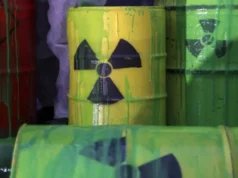The Indian Ocean has always been a strategic waterway, facilitating trade between the Middle East and Africa, Africa and whole of Asia, Middle East / South Asia / South East Asia with the Americas and how can we forget those down under, Australia, New Zealand and Oceania.
The ocean has become even more significant during recent years as Japan, China and India are now in the top five economies of the World and continue to grow. China has also become the main Asian trade competitor of both Japan and India.
China is also trying to challenge he United States and its continued dominance of the Nautan Sea or the Sea South of the Chinese Coast. China has also started foraging into the Indian Ocean, to test the response of India and others.
China began its interaction with Sri Lanka in a big way in 2007 when Beijing got involved in the fight against the Tamil Tigers, offering President Rajapaksa the diplomatic and military support needed to eliminate the rebellion.
Though there was nothing of military significance, as India was watching every move of China and so the Chinese did not dare. Therefore they changed tactics and aid turned into high interest loans going into major construction projects that left Sri Lanka deeply in debt with China.
Sri Lankan debt stood at 77.60% of GDP in 2017, which was much higher than the 69.69% average for between 1950 and 2017 according to Trading Economics. Today the budget deficit of Sri Lanka stands at around 5.5% GDP for the country, which is only adding to the debt.
This is a very bad time for Sri Lanka to become more indebted. The country is already living above its means, as shown by the continued account deficits, which was around 2.60% of GDP in 2017.
Sri Lanka took steps to combat the rising debt to China by signing agreements with that country that swapped loans for equity. In doing so, it placed China in the position of being an owner of major infrastructure projects such as the major port in Sri Lanka. Though Beijing may now be owning the port, they cannot do any thing with it in Naval Terms in the Indian Ocean. For that they have to try and develop Gwadar Port in Pakistan.
However, China’s aggressive attempt to control trade in the Nautan Sea that is the Sea located South of China and Indian Ocean has begun drawn the attention of both India and Japan.
The two countries conducted joint naval exercises in Malabar, in the Bay of Bengal, just last year. They then came together to propose the idea of an “Asia Africa Growth Corridor” (AAGC) as an alternative to the Belt and Road (B&R) initiative China is pushing.
Now Tokyo is interested in boosting Sri Lanka’s defences. The gesture is very timely and not just a symbolic one. Last week, Tokyo donated two coast guard patrol craft to Sri Lanka.
The craft cost over US$11 million to make. Japan’s move comes a year after CM Port issued a $584 million payment to Sri Lanka, one part of a larger $1.12 billion deal to operate Hambantota deep-sea port in that Indian Ocean nation. The agreement, which was signed in July 2017, allows for CM Port to operate the $1.5 billion Chinese-built port under a 99-year lease. The full $1.12 billion will be used to reduce the Sri Lankan debt to China..
Investors should still keep an eye on things, as Japan’s most recent move has created tension between the two Asian neighbours. However this is going to stabilize the thing further within the Indian Ocean. Militarily Chinese Navy cannot dream of matching the Indian Navy within the Indian Ocean and now Japan aligning itself with India, it will boost the self confidence of the investors in the region.
Financial markets, however, appear to be ignoring the potential risks. After all, markets trade on the fundamental value of investments rather than geopolitical risks. So Sri Lanka should make the most of it by reducing and finally eliminating the Chinese debt as early as possible.




